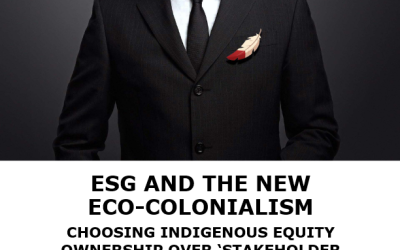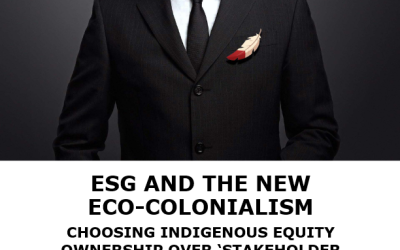EDMONTON, Alberta, — Native Canadians here in the frigid north tend to be soft-spoken and guarded about expressing their opinions to outsiders; that is, until the conversation turns to the subject of the antifur campaigns that began in the late 1960’s.
Little wonder. The unintended consequences of the war against fur have hurt the livelihoods of thousands of Canadian Natives, and have enticed them to replace their lost incomes by welcoming into unspoiled areas the oil, gas and mining interests they once opposed.
“I can’t find the words to fight back,” said Zacharias Kunuk, an Inuit film director and seal hunter who lives in the Arctic town of Igloolik. “They are a bunch of Hollywood rich people who talk as if animals think like humans, when they don’t.”
The sentiment of Rudy Cardinal, a 43-year-old Inuvialuit who now works as a custodian at Aurora College in Inuvik, was not much kinder.
“I grew up in an old log cabin with a sod roof, traveling by dog teams, checking my nets, hunting and trapping,” he said on a day not long ago. “I’d love to go back to the old days but the bleeding hearts from Europe and the self-righteous groups killed our way of life.”
Now he is training to drive heavy trucks for a proposed natural gas pipeline project in the pristine Mackenzie River Valley.
Such opinions, expressed in recent weeks, hit like harpoons to the soul for environmentalists who now acknowledge that some activists went too far in their zeal to protect baby seals from clubbing and lynx, marten, beaver, fox and other furry animals from cruel foot traps that left them writhing in pain.
The campaigns against the commercial kills of seals and against inhumane treatment of animals by hunters seemed to some a moral imperative. Now those campaigns appear to have unnecessarily snared the native populations in sanctions that might have been more accurately aimed at large commercial interests.
“The collapse of the fur trade was a disaster for people who are guardians of the environment,” said Elizabeth May, executive director of Sierra Club Canada, who now proposes that fur trapped by Canadian Natives be labeled as such to promote their acceptance among environmentally minded consumers.
The long campaign to ban furs had many twists and turns. Public outrage led the European Economic Community to ban the import of seal pelts in 1983. Eight years later, in 1991, the European Union passed a resolution banning the import of fur from countries using leg-hold traps.
The 1991 European resolution was delayed for years by Canadian, Russian and the American lobbying, but the decades of campaigns against seal skins and other furs led by the International Fund for Animal Welfare and other groups helped change fashion tastes.
Women who wear animal skins for coats and stoles still risk attracting nasty glares from the ecology-minded, who would probably be surprised to hear that their righteous cause has a cost.
Trappers who once used to report to environmental groups when logging companies were clear-cutting forests or to the Canadian military when low-flying jets were disrupting caribou herds are no longer in a position to perform those custodial roles.
Populations of wolves, once killed by trappers to protect the skins of animals caught in their traps, have soared to the detriment of buffalo and caribou herds. An explosion in the population of beavers, which were almost extinct a century ago but now number an estimated 20 million in Canada, has caused the flooding of farmland as the animals eagerly pursue their dam-building.
“I’m still bitter about what was done to us,” said Stephen Kakfwi, the premier of the Northwest Territories. “We pleaded with Greenpeace and the others. We told them we will have to turn to oil and gas and mining for jobs if they took such a hard stance against the import of wild furs to Europe.”
As a young leader of his Canadian Native group, the Denes, Mr. Kakfwi opposed the development of the Mackenzie River pipeline. After the fur trade collapsed, he said, the native groups had no choice but to negotiate royalty agreements with oil companies to make up for the loss of the fur market. Now environmentalists fear that natural gas development in the river valley could threaten vital habitat for the grizzly, musk ox and caribou.
Similarly, impoverished Inuit settlements in northern Quebec reached an agreement last year with the Canadian government to promote offshore gas drilling in waters still teeming with seals. Nine Cree settlements around James Bay recently voted in a referendum to allow the provincial government to flood 115 square miles of traditional hunting lands for hydroelectric development in exchange for millions of dollars in aid and greater autonomy.
Among the strongest supporters of the agreement were trappers who could no longer make a good living off the area’s foxes and beavers, said Bill Namagoose, the executive director of the Grand Council of the Quebec Cree.
“By saying don’t kill the animals,” Mr. Namagoose said, “they killed the economy.” He added that many moose and marten would die in the flooding and that sturgeon and walleye spawning would be affected. “But we have to accept reality,” he said.
Hunting seals was central to a way of life for the 45,000 Inuit who used blubber for fuel and skins for clothing and tents and insulation for their igloos and wooden huts. That way of life is now almost gone, replaced by an emerging urban landscape on the tundra. Seal meat has been replaced largely by a modern diet high in unsaturated fats and sugar, raising local rates of diabetes.
Source: Clifford Krauss, “The War Against the Fur Trade Backfires, Endangering a Way of Life,” New York Times, February 4, 2003.



